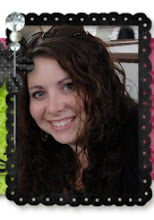I must say, and all my friends can attest, that summer is my favorite season! There's something about the warmth of the air and the feeling of the sun baking my (shamefully pale) skin that makes the world seem right!
I know it isn't uncommon for most teachers to long for the summer months, but my love for summer has more to do with the blistering hot weather than it does the three..two and a half..two month break from school. Now don't get me wrong, I am ALWAYS ready for that break. It's not that I feel the need to get away from my students, especially this past year. (I had what will go down in history as one of my favorite classes ever!) It is that there are SO MANY things to do and think about at the end of the school year. Between the nine-week assessments, grade cards, nine-week awards, kindergarten graduation, graduation gifts, cumulative files, field day, inventory reports, first grade visitation, packing away my classroom, and checking out, I inevitably feel like I just want someone to stop the merry-go-round and let me off by the time June arrives.
Since I am a good three weeks into my summer break now, with my disgruntled feelings regarding my lack of spring break a distant memory, I have had plenty of time to relax and clear my head! Before school was out, I borrowed many frivolous ebooks from the library in preparation for what one of my fellow teachers calls "chill mode." I've spent the last several weeks fully devoted to "chill mode" and have read some Nicholas Sparks, Emily Giffin, and most recently The Paris Wife by Paula McLain. Over the past week, I have felt my mind shifting, and I knew what was happening. "Chill mode" was slowly being deactivated, and soon it would be time for me to get back "in the lab," as Mr. Smith would also say. Now, if you're unfamiliar with this form of slang (which I suspect he invented himself), it means to work on lesson plans and classroom instruction. Yes, after a handful of weeks in "chill mode," I am ready to start planning for next year!
This of course means that my reading selections will inevitably change from light-hearted and frivolous to practical and educational. One of my favorite practical and educational authors is Debbie Diller. I have spent the past two summers reading her books. I truly cannot choose a favorite among them, but I can say that Spaces and Places changed my life.
In the book, she gives practical advice about organizing and arranging your classroom to maximize student learning. You're probably thinking, "Really? A whole book about where to put things?" To that I say, "Yes! Really! And it's amazing!" Now, I should also say that to get the full effect of the book, I think it is best to read Literacy Work Stations: Making Stations Work, also written by Debbie Diller first. However, I don't want you to overlook the importance of Spaces and Places.
I want to share two (of the many!) things I learned from this book that I believe have helped maximize student learning in my classroom. If you're thinking, "Hello...SPOILER ALERT!" don't worry! There is a wealth of knowledge to be learned beyond the two things I'm going to share. One thing Debbie suggested in the book that was a new concept for me was anchor charts. She recommends straying from the usual cutesy and seasonal-type displays in the classroom and replacing them with anchor charts. These anchor charts would be ones created as a class that the students could use throughout the day. Like any good kindergarten teacher, my heart hurt a little at first when I thought about not covering my classroom with cute decorations. However, I found that eliminating superfluous decorations not only made my job easier, but my students on the autism spectrum also preferred a more consistent atmosphere rather than one that continually changed.
The second concept I'd like to share from Spaces and Places involves the sacred area on and around teachers' desks. Now if you're like me, that area is not so sacred and is more like a dumping ground where things land as I whiz past it throughout the day. However, I did realize that I was breaking one of Debbie Diller's "rules." Debbie warns against turning the area on and around our desks into shrines of our alma maters. Now if you haven't heard, we Purple Raiders are pretty crazy about our dear old MUC (more recently called UMU). Needless to say, I was quite guilty of this. Since reading the book, I have tried to simplify my "shrine" and have even found ways to incorporate my massive teacher's desk (that I was denied permission to remove) for student use!
These two lessons, which are just the tip of the iceberg, had a positive impact on student learning in my classroom. So when you're ready to deactivate your "chill mode" and get back "in the lab," I highly suggest picking up this or any of Debbie Diller's books! They're amazing and readily available at any chain bookstore!
Warmly,
Miss J.











